The Huawei P8 Review
by Andrei Frumusanu on June 4, 2015 8:00 AM EST- Posted in
- Smartphones
- Huawei
- Mobile
- P8
- Kirin 930
CPU & System Performance
As mentioned in the introduction of the P8, the new Kirin 930 SoC is an octa-core A53 with one low-power quad-core cluster with a frequency range going from 403MHz up to 1516MHz, and another high-powered cluster going from 1017MHz up to 2016MHz. I was able to determine that the L2 cache size of the high-performance cluster comes in at 512KB, but due to no available rooting mechanisms for the device I couldn't manipulate the device to lock our benchmark tool onto the small cores to determine their exact configuration.
Generally, due to this being an A53 device, we shouldn't be expecting any stellar performance as ARM's little core is about 2-2.5 times slower as an equivalently clocked larger architecture such as an A15 or A57 CPU. So while Huawei ramps up the clocks quite high at 2GHz, it's still very much more of a mid-range performer.
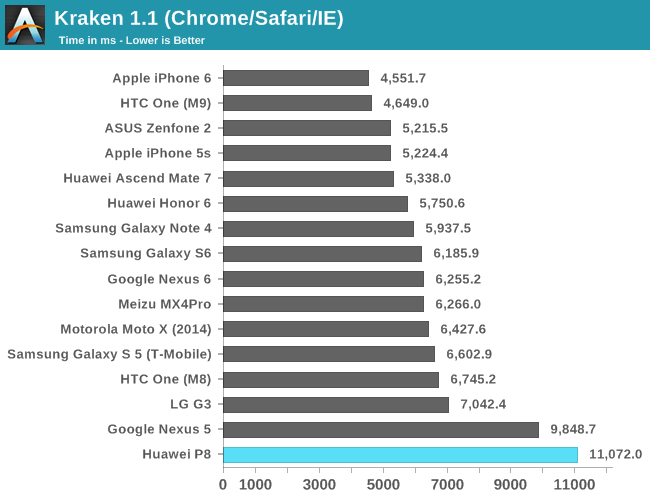
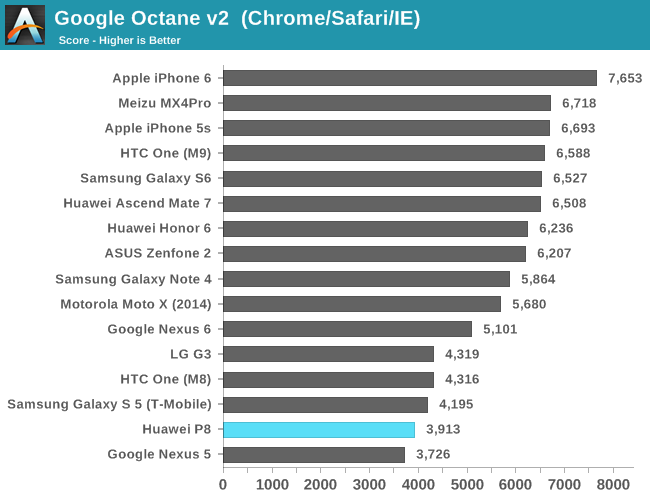
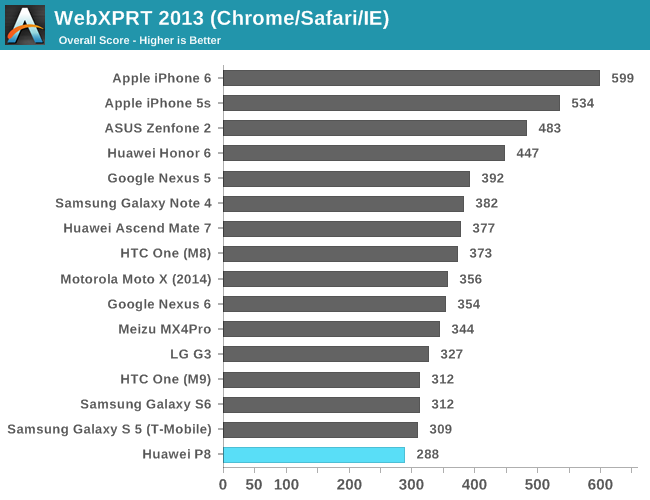
As expected, our in-browser benchmarks put the P8 at the lower-end of the performance spectrum as it simply doesn't have enough processing power to keep up with the competition. I also tested out to see if the stock browser would have any optimizations, but it performed more or less the same as Chrome. This makes sense as compiler targets shouldn't affect an in-order architecture such as the A53 as much as larger and more complex cores as ARM's big lineup of CPUs.
While the Javascript benchmarks represent a good insight in performance when browsing websites in a browser, it's far more common for users to experience web content via third-party applications which make use of a built-in WebView frame, in which case the OS's WebKit engine is used.
PCMark is such a test, where we can analyse performance numbers more representative of daily use-cases.
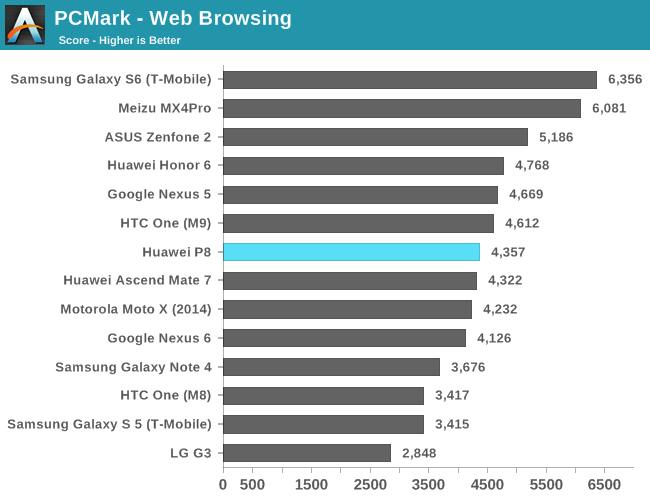
In the Web Browsing test, the P8 manages to land in the middle of the crowd. We saw large performance improvements coming from the Android 5.0 Lolipop update on several of our devices, and we're still in the process of updating all devices to the latest firmware to be able to re-test them.


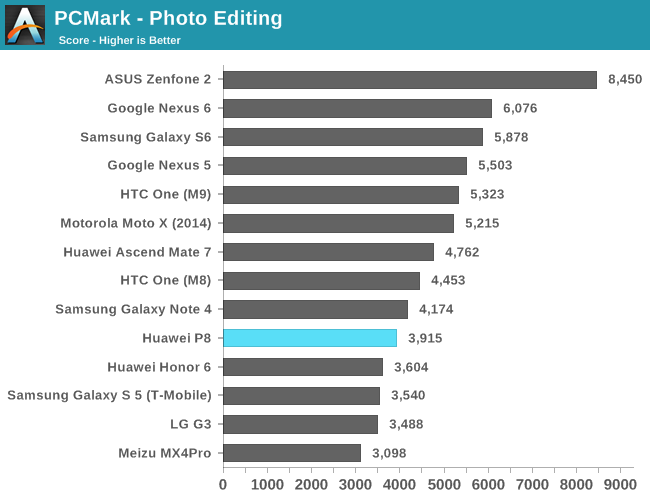
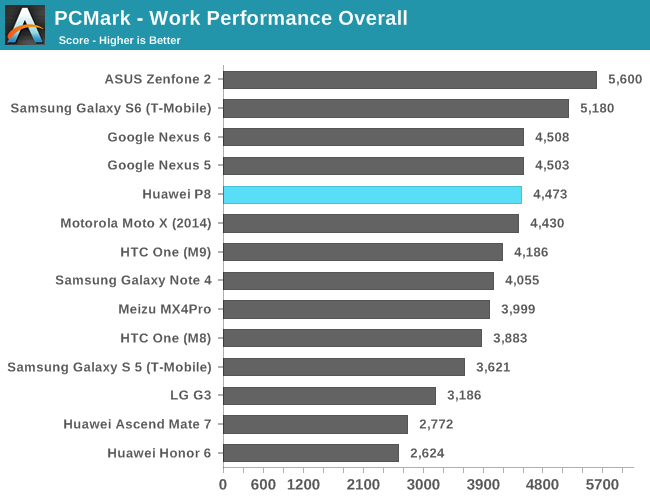
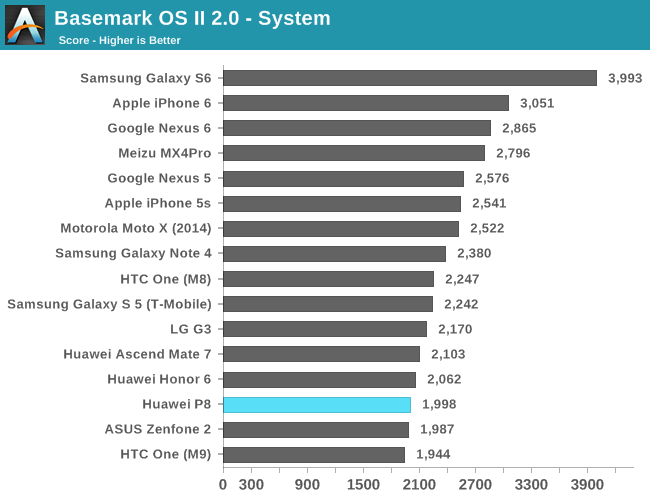
The system benchmark of BaseMark OS is more processing power oriented, as as such, the A53 cores don't perform as well in this test.
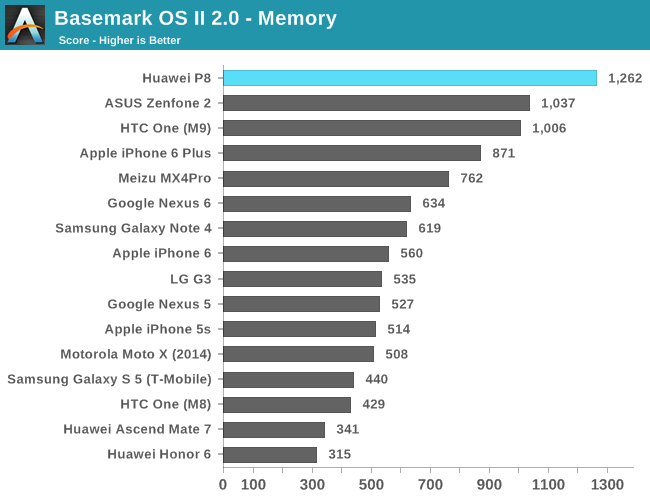
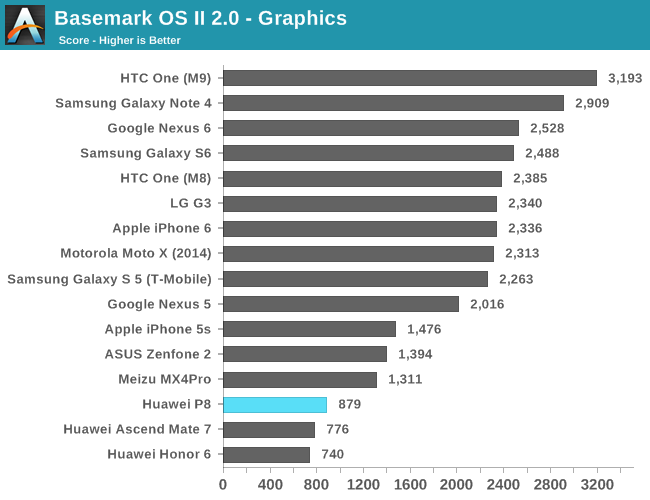
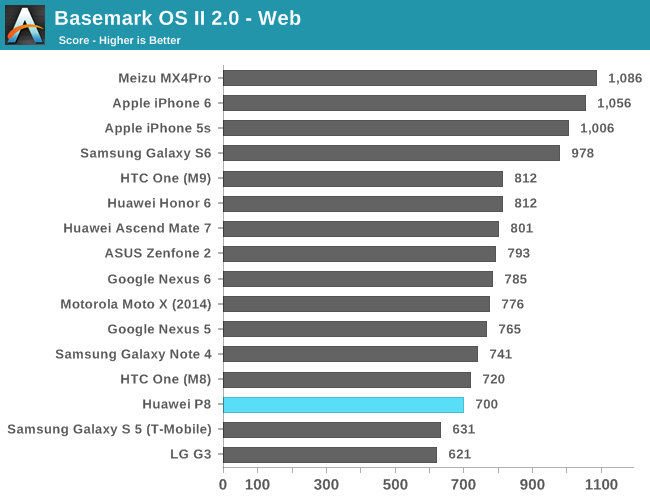

Again, the overall score ends up average for the P8. In every-day usage the device still manages to be quite fast even though it can't be compared to other flagship devices with stronger SoCs. HiSilicon especially seems to have some issues with fluid performance when CPU demand spikes very strongly, as one will notice small stutters throughout some apps when more heavy processing is being performed, something I often reproduce on other big.LITTLE SoCs when I disable aggressive scheduler migrations.










104 Comments
View All Comments
Taneli - Thursday, June 4, 2015 - link
Another iPhone clone from Asianiva - Thursday, June 4, 2015 - link
How is this thing an iPhone clone?der - Thursday, June 4, 2015 - link
Design Profile, Camera UI, yada yada yadaEthos Evoss - Friday, June 12, 2015 - link
another asholeshaolin95 - Tuesday, September 15, 2015 - link
bingo! lol Taneli you are such a loserrandom2 - Sunday, June 7, 2015 - link
All phones are iPhone clones. Don't you know anything? :)Ammaross - Monday, June 8, 2015 - link
At least that's what Apple's lawsuits have claimed....Ethos Evoss - Friday, June 12, 2015 - link
nothingEthos Evoss - Friday, June 12, 2015 - link
no iphone copied sony ...http://www.dailytech.com/Samsung+Apples+iPhone+Sta...Refuge - Friday, June 12, 2015 - link
it is also a rectangle? Didn't they have a patent on that at one time? lol